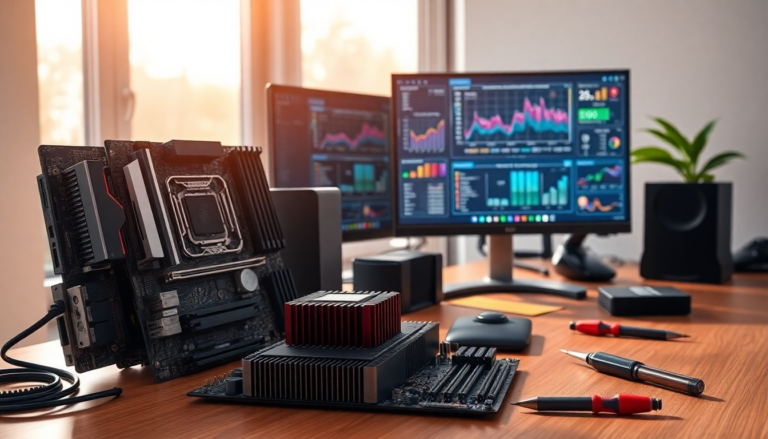Argomenti trattati
In a notable shift within the tech landscape, AMD has ceased production of its B650 chipset, a move that has raised eyebrows among PC enthusiasts and builders alike. This midrange chipset, which debuted in 2022, has played a crucial role in many upgrades to the AM5 platform. As the news spreads, the implications for users and the broader market are starting to unfold.
Understanding the production halt
The announcement regarding the discontinuation of the B650 chipset came from a Chinese tech forum, Bobantang, which claims that AMD is now in the process of winding down production. While the chipset has been a staple for many users, AMD’s decision seems to point toward a strategic pivot. The B650 series was not just popular; it was essential for those looking to upgrade their systems without breaking the bank. As manufacturing comes to a close, the existing inventory is expected to last for a while, with availability projected to remain high even after production halts.
The future of B650 motherboards
Despite the cessation of production, users shouldn’t panic just yet. The current stock of B650 and B650M motherboards is expected to remain available well into the second quarter of the coming year. However, as production stops, we may witness a gradual scarcity of these components. The surplus inventory can be attributed to the production phase known as the “digestion stage,” where AMD and its partners will work through existing stocks before completely phasing out the chipset.
What does this mean for the AM5 platform?
The discontinuation of the B650 chipset is not just a story about one product but rather a harbinger of change for the entire AM5 ecosystem. AMD seems to be gearing up for a more aggressive push toward its 800-series chipsets, particularly the B850. With this transition, the B850 is expected to fill the void left by the B650, becoming the go-to option for budget and midrange builds. This shift could result in a more competitive pricing landscape, making advanced features like PCIe Gen5 more accessible to a wider audience.
The rise of the B850 chipset
As AMD looks to the future, the B850 chipset stands poised to take center stage. This new generation could offer significant improvements over its predecessors, appealing to gamers and content creators eager for enhanced performance. The anticipation surrounding the B850 is palpable, especially as it promises to deliver features that have become essential in the rapidly evolving tech landscape.
Pricing and market implications
With the B650’s production winding down, we can expect fluctuations in pricing as supply dwindles. Currently, budget-friendly B850 motherboards are priced above $200, a figure that many hope will decrease as inventory levels stabilize. This potential decline in price would not only make upgrading more attainable for enthusiasts but could also encourage competition among manufacturers, leading to better products and prices for consumers.
A nostalgic farewell to the B650
The B650 chipset has been more than just a component; it has represented a significant era in the evolution of AM5 technology. For many, it has served as the backbone of their systems, facilitating upgrades that have kept performance levels high. As we bid farewell to this popular chipset, it’s worth reflecting on its impact on gaming and content creation. The B650 was a key player in the transition to the AM5 platform, and its legacy will likely be felt for years to come.
Looking ahead
As we stand on the brink of a new generation with AMD’s B850, the tech community watches closely. The discontinuation of the B650 is just one part of a larger narrative within the industry. While it marks the end of an era for some, it also opens the door to exciting innovations. As AM5 continues to evolve, users can look forward to advancements that promise to redefine their computing experiences.

